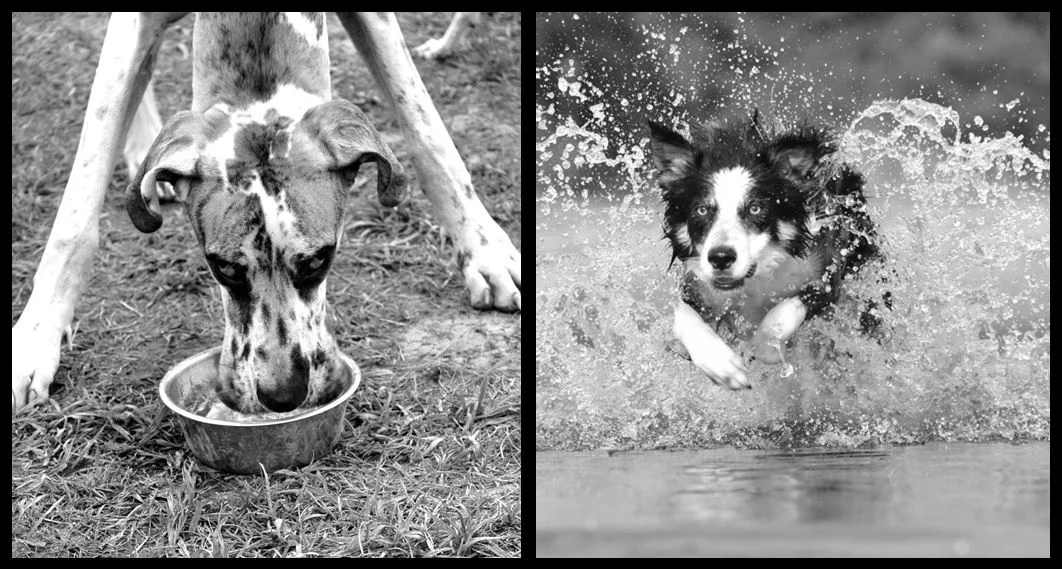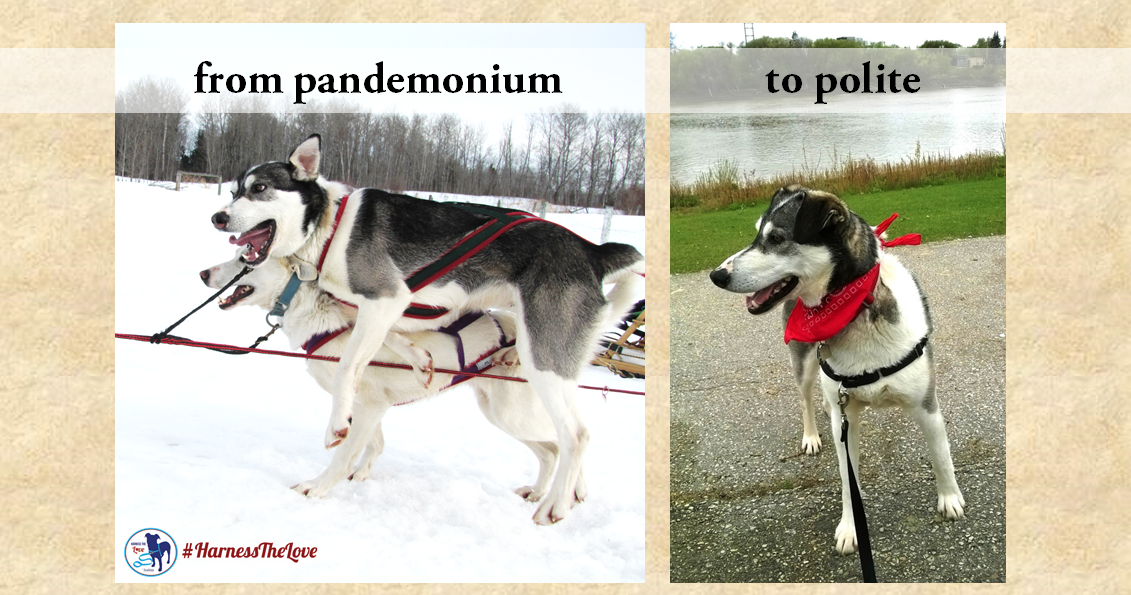Teaching "life cues" to your dog
I recently visited an acquaintance who has three friendly and lovely dogs. Most friendly dogs will run up to say hi when a person appears - they love to meet and greet. I was told before I arrived, however, that in the apparently unlikely event that the dogs left the porch I was to stop the car, only proceeding forward when they returned to the porch. "We get some people who drive quickly through our farmyard" I was told. "This keeps the dogs safe."
Well, paint me purple and call me Penny - what a crafty bit of dog training that is! The owner had, by chance or design, set up the arrival of a car as the cue to return to and stay on the porch. The paycheque for this (rather onerous, at least from the dog's perspective) behaviour is simple and easy: if they stay on the porch, they're allowed to greet the humans, a reward for which friendly dogs are often willing to work.
My dogs come running when we hear a car in the distance.
Hold on a second. The car is a cue?
Usually, we think of cues as the verbal commands in old-time drudgery-laden obedience training. Sit! Down! Heel! Unlike the hand gestures and food lures we use to get a dog into position when we're first training, cues are stylized, random (according to the dog - sit has no more meaning than pineapple or 你好), and need to be specifically taught for the dog to perform to them. Many dog owners want their dogs to sit when they say sit, and to lie down when they say down. Importantly, almost all dog owners want their dogs to come running fast and furious when they yell come. For this reason, most dog classes include a quick how-to on teaching a dog to perform on a verbal cue. But understanding how to really use and teach cues allows you, delighted dog owner, to use them when they'll make your life easier and in cases where they can help keep your dog safe.
When to train non-standard cues.
I have trained my loose-running dogs to come to me on walks when we hear a car, since we venture close to a rural farm road. The sound of the car is the cue to recall (this car cue keeps my dogs safe, too). However, the sky is the limit on training useful cues. See if any of these fit your needs and let your imagination run wild.
- The sound of the car is a cue for a car-chasing dog to come inside. Reinforcement: tug game.
- The sight of a person walking by outside the window is the cue to come to the couch instead of barking. Reinforcement: cookie and patting.
- The appearance of the leash is the cue to come near the door and sit to have a front-clip no-pull harness put on. Reinforcement: walk time.
- Returning with a ball is the cue to drop the ball. Reinforcement: ball toss.
- The sight of another person on a walk is the cue to heel for a few steps in order to pass them politely. Reinforcement: cookie.
- The appearance of the owner's current crush is the cue to sit and wave. Reinforcement: cookie.
- The sound of the garage door opening is the cue to get off the couch, run to the dog bed, and look innocent. Reinforcement: pig's ear.
- The question "what's that ...odor?" is the cue for your dog to nose-prod your guest. Reinforcement: praise, laughter, and patting.
- The sound of your phone ringing is the cue to find your phone and bark at it until you find it, too. Reinforcement: cookie.
I assume your dog already knows how to do the behaviour in question - if not, get thee to a good dog class (or get a great book) and get training! Now, you just need some help transferring the existing cue - a verbal cue or hand signal - to the new cue and context.
New Before Old.
A good mnemonic for how to teach your dog to respond to new cues is New Before Old, He'll Do As He's Told (this really, really, really isn't to say we should be telling our dogs what to do - we must train them with skill and love, and motivate them with food. It just rhymes, and I want you to remember it.) This means the dog must perceive the new "cue" before you dish out the known, old cue. For example, when I was training my dogs to recall when we heard a car, I would wait until I could hear the car in the distance...the "new cue". I knew my dogs, with their superior hearing, would have already heard it, too. I then simply called them to me - a behaviour they are all quite good at. And I reinforced. Over time - this can take quite a few repetitions, depending on the behaviour, the context, and the dog - the dogs started to recall even before I called them. In some cases, even before I'd heard the car (I keep reinforcing the recalls to keep them strong, of course).
The formula:
New cue + [wait a second or two] + Old cue = Behaviour + reinforcement
We wait a second or two after the new cue to allow the dog time to perform the behaviour, before we help with the old cue. Over time, the dog learns that the new cue predicts the old cue, and will do the behaviour without that extra bit of help. Keep supplying the old cue until the dog will perform the behaviour for the new cue, at least ten times in a row.
Here's another example. I want one of my dogs to sit when I let other dogs in and out of the door. I open the door and let dogs in/out (new cue), wait a second, then say "sit", and then reinforce him when he sits. I've l̶a̶z̶i̶l̶y̶ brilliantly left a bucket of biscuits at the door so I am always ready to reinforce. Now, when the scrum starts, he sits - and looks expectantly towards the cookie jar. It's a quirk of dog behaviour that if I had cued a sit first and then let the dogs in and out, he simply wouldn't learn to sit at the scrum. The new cue must predict - that is, come before - the old cue.
Good luck and happy tails!



















